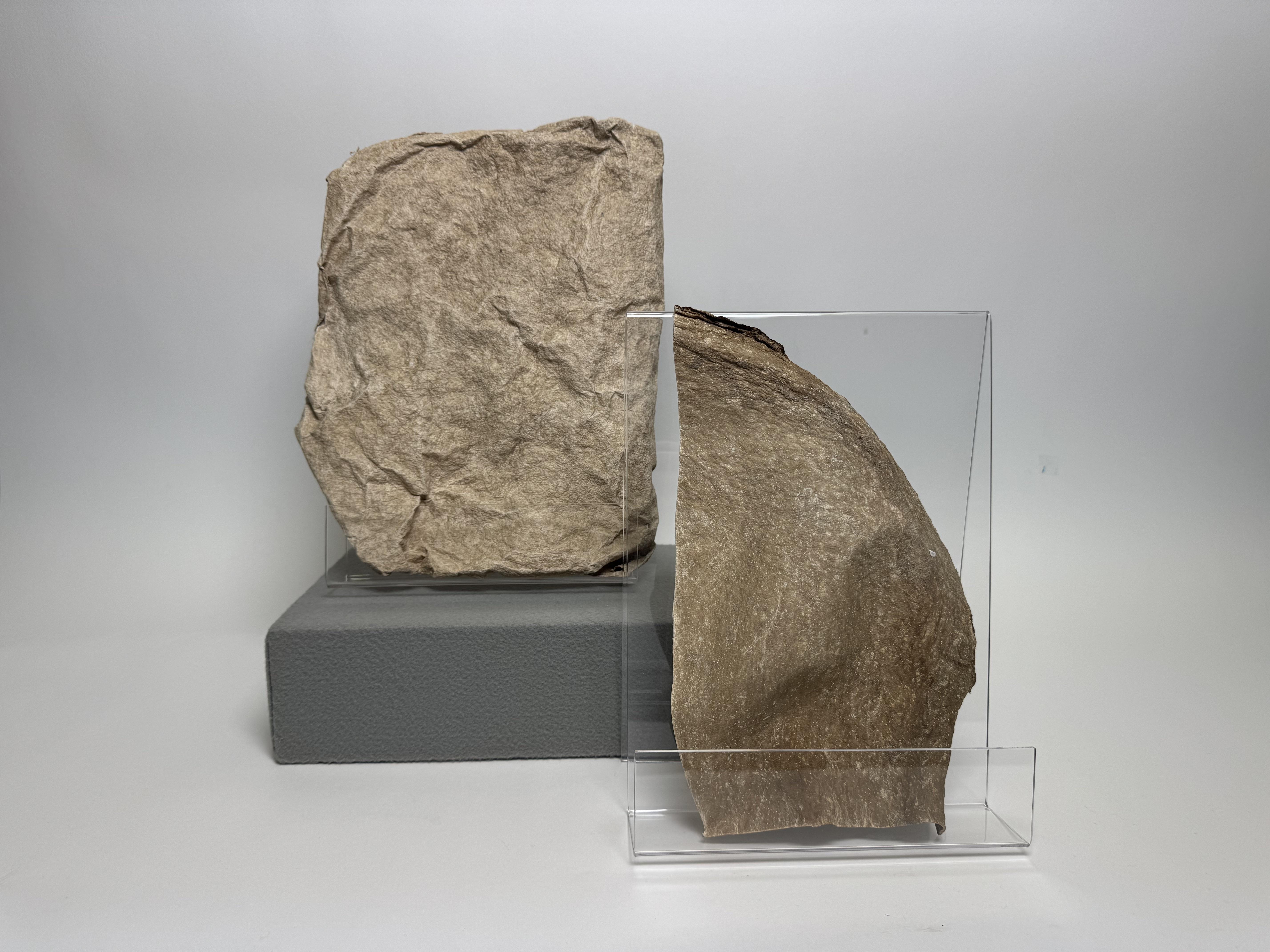Douglass Morse Howell's Paper Armour Experimentation
May 1, 2025
The artifact of the month for May is two pieces (2019.06.216a and 2019.06.216b) of experimentation with paper armor created by Douglass Morse Howell. This piece was donated by Alexandra Soteriou and collected while she was a studio assistant for Douglass Morse Howell in the late 1970s and early 1980s. It showcases his experimentation with flax and linen papermaking strength to try to make it as durable as armor. He was inspired by a reading in Joseph Needham’s book Science & Civilisation in China, Volume V:1 by Tsien Tsuen-Hsuin which recounted how the Chinese made armor from paper.
About Douglass Morse Howell
Douglass Morse Howell is a famous American papermaking pioneer. He lived from 1906 to 1994 and after WWII, he returned to New York and established a print shop. After discovering issues with the quality, he decided to begin experimenting himself, starting with reading Dard Hunter’s work. This began his journey in reviving American papermaking.
Howell spent most of his years experimenting in and inspiring a resurgence of papermaking in America. One of his impressive tasks was the design and building of three mechanical beaters, each one improving upon the last to create better beaten pulp for his paper. While western in his paper making approach, Howell had many respectable techniques from his preference for a mallet, whose end product he tried to replicate in one of his beater designs, to his use of dyed linen over additives for color work. All of his sheets were waterlead but played around with the pigment, sizing, and time the pulp was beaten.
Paper Armor
Joseph Needham’s book Science & Civilisation in China, Volume V:1 by Tsien Tsuen-Hsuin details a light defensive battle covering made of paper for soldiers’ bodies, called Zhi Jia. Where iron armor is heavy, rusts easily, and a burden in muddy terrains, paper armor offers protection while being light, flexible, and cheap. While there are inconsistencies in how expensive the armor was depending on the time period, type of paper used, quality of finishing, and how badly it was needed, overall it is recorded as being a cost effective alternative. The paper armor favored paper from Korea during the Qing dynasty for its durability and strength when folded and pleated. In addition to the layers of folded paper, the armor has a one inch, knee-length, pleated layer of cotton on the inside for extra protection. The armor could withstand heavy arrows and certain bullets.
Before being used for military purposes, it was meant for civilians in times of emergency as it was something that they would be able to make themselves by cutting and sewing the material; as opposed to the forging required for iron armor. When the potential of it was realized by the army, it also offered a way for citizens to contribute on a larger scale.
Though it was used a bit by the navy, this covering was optimal for foot soldiers in the south, as the terrain is dangerous and low. It is believed that this method began in the late Tang dynasty while Xu Shang (fl. +847–94) was governor of Ho-tung (also called Hongtong, modern Shanxi) though is credited to Shang Sui-ting (now Shuiding). It was officially recognized under the Song dynasty and notably utilized in the Ming dynasty by soldiers in southern China against Japanese soldiers invading the coast. It was used by certain tribes as late as the Qing dynasty.
Paper Armor Research
Peter Dekker, a researcher who wrote an article titled “Practically Invulnerable: Chinese Paper Armor” notes in it that paper being a soft material makes it more resistant to damage; it takes in and yields to the force, taking in impact, before taking damage. He suggests that the strength of the paper armor lies in the use of multiple layers in its construction. As steel is a single material, once the entire piece is cracked. Paper armor offers more flexibility so a certain number of layers are damaged instead of the entire thing. This method makes it resistant to arrows and even bullets from certain distances.
Category: 3-D Objects
Region of Origin: American
Keywords:
Artist

